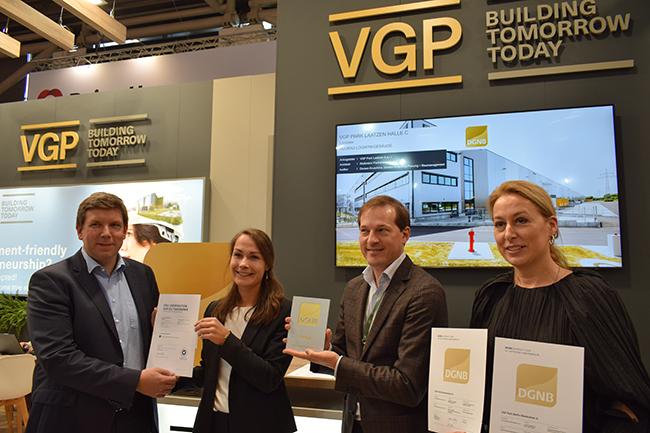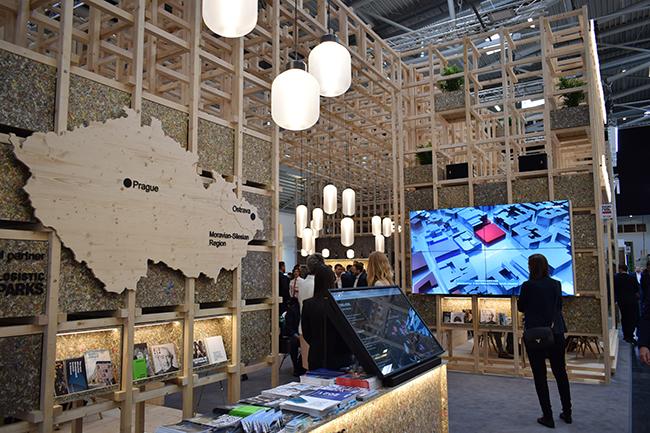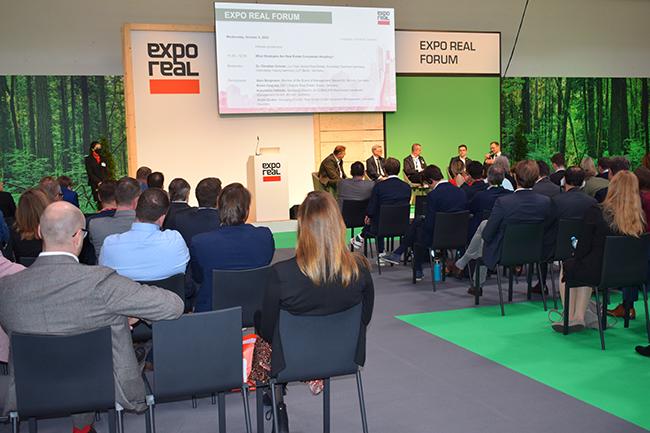EXPO REAL Roundup: Real Estate markets has to face a number of challenges
Real estate specialists concurred that the deteriorating geopolitical and economic environment as well as climate change have created an unprecedented amount of issues and obstacles for the construction sector and the real estate market. Therefore, inflation, price rises, interest rate policy, the energy crisis, climate protection, ESG, digitization, affordable housing, and collaboration with the public sector were the main themes of the event. A comprehensive supplemental program with six thematic discussion groups reflected this. Almost 140 conferences and panel discussions featured participation from more than 400 specialists, including bankers, real estate experts, and forecasts. They all discussed what scenarios would be ideal for the industry's future growth and direction, as well as how much change the construction sector and the real estate market require.
The European real estate market is affected by inflation and interest rate policy as well as ESG:
Inflation and interest rate policy emerged as one of the major issues of Expo Real as a result of the turmoil brought on by the conflict in Ukraine. In an online poll of nearly 500 fair attendees, the majority of respondents gave the European Central Bank's increase in interest rates a favorable evaluation: 61% of them believe the ECB will put an end to the real estate boom, and 67% believe that real estate financing will now be based on more realistic principles. The current market instability is reflected in the mindset of Western European investors, claims Jakub Stanislav, senior manager of the investment department of the real estate consulting firm CBRE.
A decline in real household incomes, which might restrict the inflow of investment capital for institutional open-end retail funds, is one of the effects of European inflation, in his opinion. "Besides the new ECB interest rates, banks are already projecting possible future market risks into debt financing. Logistics and industrial properties, but also premium office buildings and retail parks, are currently the driving force among the real estate sectors. Properties of this type currently also generate higher rental income," added Jakub Stanislav.
ESG as Europe's "new normal":
The consideration of ESG (Environmental, Social, and Governance) principles in investor decision-making is rising in importance. ESG commitment is now the "new normal" in Europe, according to Jiří Stránský, head of the sustainability team at CBRE, and as a result, its significance in the real estate sector is increasing dramatically. The implementation of ESG principles increases the competitiveness and value of real estate. "ESG parameters will be reflected in decision-making processes across individual segments of the entire real estate sector - from investors to developers to tenants, when one of the declared goals will be reducing the carbon footprint. According to our surveys, more than two-thirds of European investors have adopted ESG criteria in their investment practices and processes. Today, institutional investors and funds invest almost exclusively in real estate that complies with the EU taxonomy and has set goals in the field of ESG," commented Jiří Stránský.
New building materials for climate protection and as one of the paths to carbon neutrality:
To help halt the increase in Earth's average temperature, EU nations are striving toward climate neutrality by 2050 in accordance with the 2019 Green Deal for Europe (committed by countries around the world as part of the 2015 Paris Agreement). Since buildings are responsible for the production of over 40% of the world's greenhouse emissions, lowering their energy requirements is extremely essential to attaining this aim.
The same, though, holds true for planned structures. The increased use of non-traditional building materials, or, to a much greater extent, those that mankind has been using to build for ages, especially wood, is a significant strategy to minimize the carbon footprint. For example, the Austrian company UBM Development AG presented at Expo Real its ambitions to become the largest European developer of ecological buildings with a hybrid wooden structure. It has already implemented, or has pilot projects under construction abroad (one of the buildings of the barany.7 residential complex in Vienna, or the construction of the Timber Pioneer wooden office building in Frankfurt am Main), and its Czech branch UBM Development Czechia intends to use this technology in the Czech Republic as well. “Traditional building materials such as concrete and steel account for around 6% of global CO2 emissions. This is a similar share of carbon dioxide as generated by global air, shipping and rail transport combined. If we replace at least part of them with wood, we will significantly reduce the carbon footprint of building structures. In the 3-5 year horizon, we plan to build residential and commercial buildings with a wooden or hybrid wooden structure with a total area of 200,000 sqm," commented Bernhard Egert, head of the wooden structures division of UBM Development AG. His own research carried out in 12 European countries, including the Czech Republic, which was presented at its stand at the fair by PlanRadar, a company focusing on the digitization of construction and real estate projects, further expands the spectrum of building materials of the future on the way to carbon neutrality: in addition to wood, respondents in the survey are betting on, for example, hemp, straw or mushroom fibers. "All these materials they absorb carbon dioxide during growth and then conserve it in the structure of the building for decades," said Adam Vostárek, PlanRadar's Senior Sales Consultant for the CEE region. According to PlanRadar's survey, other perspective building materials include graphene, regenerated nylon and bio concrete.
The energy crisis calls for economical energy solutions:
Even real estate developers from those sectors are coming up with "green" energy solutions amid the present energy crisis, which was not typical on a significant scale before. The industrial and logistics real estate market, which is currently driving the European real estate market, is the main target of this. As an illustration, the European developer and owner of logistics and semi-industrial real estate, VGP, has set itself the medium-term objective of fully eliminating gas from its parks. "Our pilot project in this direction is the VGP Park 'Am Alten Flughafen' in Giessen, Germany, which no longer needs to use gas at all, because we have replaced it with a heat pump system in combination with a photovoltaic system. This is the way for our new parks including those in the CEE region. In the center of our attention are the possibilities of how to store energy for further use - we consider this to be an important step towards energy self-sufficiency. We want to offer tenants green energy connected, for example, to the use of batteries, as well as the possibility of recharging their new fleet cars. In our parks across Europe (in operation, under construction and in the preparatory phase), the total green energy generation capacity reaches 174.6 MWp," said Sally Silze, who heads VGP's sustainable construction division. According to her, the need for certification of industrial and logistics properties is also related to the trend towards sustainability and energy self-sufficiency. "After office buildings and shopping centers, certification is massively penetrating this segment as well. A certified property is not only a guarantee of quality and financially efficient operation, but also that it meets a number of ecological and social parameters, which are particularly important for large corporate tenants. We have BREEAM certification in our European VGP parks, where we aim for the 'Excellent' level for new construction. In the case of DGNB certifications that our properties in Germany and Austria have, we have already advanced from the 'Silver' level to the 'Gold' level. We currently have 61.2% of our total portfolio certified," added Sally Silze.
Digitization, innovation, new technologies:
The path to achieving carbon neutrality is through innovation, digitization, and new technology. They were therefore one of Expo Real's main themes. They were the focus of a special Real Estate Innovation Forum in hall A2 where real estate professionals discussed topics like smart buildings, digitization in the housing sector, and start-up future plans. The "Tech Alley" in Hall A3 is where most of the PropTech and ConTech start-ups were located.
Aid to Ukraine:
Ukraine had its own booth at the fair. It presented the global initiative UNITED24, which was created at the initiative of President Volodymyr Zelensky and is intended to bring together donors who want to help Ukraine, under the banner REBUILD UKRAINE. The funds raised will be used for three purposes: territorial defense and demining, medical assistance, and building reconstruction. A special mission was created specifically for Expo Real under the motto "let's help save lives in Ukraine": to obtain financial support for the purchase of an armored medical evacuation vehicle, which will allow doctors to save the lives of civilians and soldiers.












